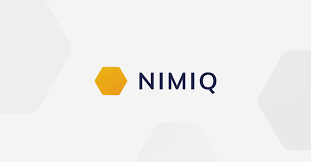Hashing algorithms have become a fundamental building component in the fields of information technology and cybersecurity. They are essential in data integrity, passcode storage, encrypted signatures, and a variety of other purposes. One such modern and efficient hash function that has gained significant attention is BLAKE2. With its impressive performance and security features, BLAKE2 has emerged as a powerful tool in the world of hashing.
This detailed guide will dig into the complexities of the BLAKE2 hash function, studying its underlying ideas, uses, and benefits. This paper will also reveal the internal functions of BLAKE2, analyze its design concepts, and throw light on its distinctive traits.

History and background of BLAKE2
Building upon the success of BLAKE, Aumasson and his team embarked on developing an improved version, and thus, BLAKE2 was born in 2012. BLAKE2 introduced significant enhancements over its predecessor. It retained the same cryptographic security goals as BLAKE but focused on improving performance, ease of use, and flexibility. The development team optimized BLAKE2 for modern computer architectures, achieving faster speeds and efficient memory utilization.
Features and advantages of BLAKE2
The BLAKE2 hashing algorithm is establishing itself as a strong rival in the ever-changing environment of computation and telecommunications. The following are the key attributes that set BLAKE2 apart from other hash functions, exploring its speed and efficiency, security, simplicity, and versatility.
Speed and efficiency
BLAKE2’s outstanding speed and efficiency are some of its distinguishing features. When examined alongside other hash algorithms, BLAKE2 outperforms them in both physical and software solutions. Its optimized architecture enables quick processing and effective memory utilization, making it an excellent solution for time-sensitive applications. BLAKE2 outperforms standard hash algorithms such as SHA-1, SHA-2, and MD5, providing significant performance benefits while preserving solid security.
Security
BLAKE2 boasts strong cryptographic security, with no known vulnerabilities or successful attacks against it. It provides resistance against collision attacks, preimage attacks, and other common cryptographic threats. The design principles of BLAKE2 prioritize security, ensuring the integrity and authenticity of data. Its cryptographic strength has been thoroughly evaluated by experts, solidifying its reputation as a reliable and secure hash function.
Simplicity
Another advantage of BLAKE2 lies in its simplicity. The design of BLAKE2 is straightforward and elegant, making it easier to understand and implement. Its simplicity facilitates efficient and error-free integration into various systems and applications. The clean and concise design of BLAKE2 also contributes to its overall performance and reduces the risk of implementation vulnerabilities.
Versatility
BLAKE2 offers a range of modes of operation and customization options, making it a versatile hash function. It offers a variety of output widths spanning from 1 byte to 64 bytes, providing customization to suit application needs. BLAKE2 may be used to generate message authentication codes (MACs) and key derivation functions (KDFs) in addition to hashing. Because of its adaptability, BLAKE2 is useful in a wide range of encrypted applications, such as data integrity confirmation, electronic signatures, and secure messaging protocols.
Applications of BLAKE2
BLAKE2 is a cryptographic hash function that finds extensive application in various domains. One of its primary uses is in password hashing, where it securely converts passwords into fixed-length strings. This guarantees that the original credentials are not easily retrieved even if the password vault is stolen. Furthermore, BLAKE2 is used in digital signatures to authenticate the reliability and consistency of digital files. Its efficient computation and resistance to collision attacks make it an ideal choice for these security-critical tasks.
Another important application of BLAKE2 is in checksums and data integrity verification. BLAKE2 detects changes or contamination in data quickly and reliably by creating a unique hashing algorithm for each collection of data. This is especially important in situations where data integrity is critical, such as file transfers, storage facilities, and internet protocols. BLAKE2’s speed and simplicity make it an appealing alternative for these applications, guaranteeing rapid and reliable validation of information. Furthermore, BLAKE2 plays a significant role in blockchain technology and cryptocurrencies. As the underlying cryptographic primitive, BLAKE2 ensures the security and immutability of blockchain data.
Implementation and integration of BLAKE2
Designers have several alternatives to use BLAKE2 in various computer languages. Many programming dialects, including C/C++, Python, Java, and Go, have BLAKE2 variants. These applications are frequently packaged as libraries or components that can be exported and utilized in programs.
Reference implementation
The reference code for BLAKE2 supplied by the designers serves as a good foundation for C and C++. It provides a clean and effective solution that is simple to include in programs. Similarly, Python developers can use BLAKE2 supporting libraries such as “pyblake2” or the “hashlib” module.
Cross-platform cryptographic libraries
In addition to language-specific implementations, there are cross-platform cryptographic libraries that support BLAKE2 integration. Libraries such as OpenSSL, Crypto++ (CryptoPP), and libsodium support BLAKE2 as well as a variety of other cryptographic methods. These libraries provide developers with a full collection of tools for integrating BLAKE2 into their apps.
You can also find these articles helpful
What is Hash function?
Everything You Need to Know About HAS-160 Hash Function
Everything you need to know about NiceHash











